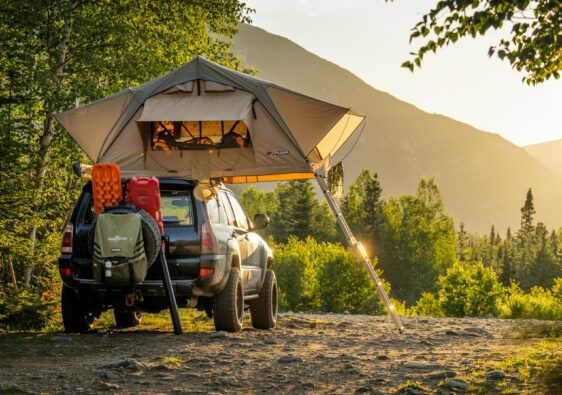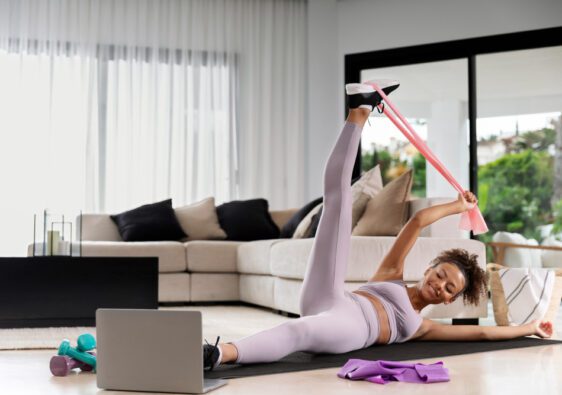The right guardrail system protects your employees, contractors, inspectors, and managers from falls while maintaining the style of your building. Whether your company’s branding is sleek and contemporary or rustic and industrial, you need an industrial guardrail that works well with the rest of your structure.
Passive fall protection systems like rooftop guardrails offer the highest level of protection with minimal PPE, training, and inspection/re-certification requirements. They do require specialized engineering and precise installation to ensure safety.
Whether your business needs an entirely new roof or just a portion of it protected, ensuring employees, visitors, and inspectors are safe is vital for compliance with OSHA standards. Moreover, it can help keep your business out of worker’s comp claims, lawsuits, and even insurance claims, which are detrimental to a business’s reputation and bottom line.
Passive Fall Protection
When we talk about fall protection, the first thing you may think of is guardrails or safety netting. These passive fall protection systems do not require human interaction and remain fixed regardless of how the worker works on the worksite.
Nevertheless, passive fall protection is sometimes the correct answer for every situation. It is essential to have a thorough fall risk assessment before deciding on which type of fall protection system to use.
Active fall protection systems include anchor points, full-body harnesses, lanyards, and connectors such as carabiners and snap hooks. Each method requires a specific set of equipment to function correctly, and all of these parts must be regularly inspected for safety compliance.
Passive Access
The roof is no exception for keeping your employees, contractors, and maintenance workers safe. Falls are one of the leading causes of workplace fatalities and injuries, and they are easily preventable.
In addition to fall protection, OSHA approved handrails are a great way to promote your brand image and identity by giving your building a unique visual touchpoint. Whether it is a custom architectural, non-penetrating roof railing, or modular handrail system, BlueWater has a solution for your unique project.
The biggest challenge to designing an excellent guardrail system is choosing a suitable material. In particular, you will want to select an OSHA-compliant guardrail system that will not degrade over time. This can be accomplished using durable, corrosion-resistant, and lightweight materials.
Choosing the Right Guardrail System
There are many ways to protect your rooftop, but one of the most effective is installing a safe guardrail system that meets OSHA requirements and keeps people safe. These guardrails are easy to install and offer a cost-effective solution for protecting your employees, guests, and even inspectors from potential injuries while working on the rooftop or elevated work area.
Choose The Right Type Of Railing
When selecting suitable rooftop OSHA handrails, there are a few things to consider: the height of the work area, if you need a permanent or temporary solution, and which infill materials and styles are most appropriate for your application. In addition to these factors, you’ll need to ensure your product is made from quality materials and is American Welding Society certified.
A single or double horizontal lifeline system may be the best fit if your work area is relatively small. Alternatively, consider multiple guardrail systems if your employees are exposed to higher-risk applications or areas with a higher slope.
The Leading Edge
The leading edge of your rooftop is a tricky spot, especially when it is snowing or covered with ice. A leading-edge safety guardrail is essential to any rooftop fall protection system.
For more than 35 years, our leading-edge guardrail has been the trusted solution for protecting your rooftop leading edges. It’s a durable, weighted non-penetrating guardrail that can be permanently mounted to the rooftop or used as a temporary flat roof fall protection rail.
It can be positioned at any roof opening, including skylights, access hatches, pits and shafts, and truck or rail docks. It can also be used as a wall-terminating fall protection system to help keep your workers safe during construction and general building or roofing work.
Depending on the type of roof, it is essential to choose a rooftop guardrail that can handle weather conditions. These guardrails are an excellent option for protecting your workers from falls during high winds, snow, and ice. Several types of metal guardrails are available, as well as non-penetrating models.
The base of your rooftop guardrail system is a crucial component, and it needs to be made from a corrosion-resistant material that can stand up to the elements. A high-quality base plate will prevent your guardrail from rusting and rotting over time and will also be resistant to damage caused by water or rain.
To ensure your rooftop safety railing is safe and OSHA-compliant, you should consult a qualified professional contractor. The professional can recommend the best options for your particular situation and needs. They will be able to install the right railing for your specific workplace, and they will also be able to offer additional recommendations for safety equipment.
Durability
Steel railings are a great way to protect your employees. They can last for years without breaking down with a strong powder-coat finish.
You should speak with a professional supplier if you are looking for a durable guardrail system that meets OSHA standards. They can help you understand the available materials and explain their advantages and disadvantages.
OSHA requires that guardrails withstand at least 200 pounds of force, applied in a downward or outward direction within 2 inches of the top edge. Midrails, screens, mesh, and other intermediate members must meet this standard.



